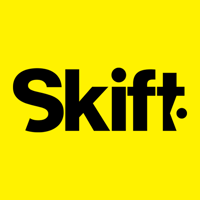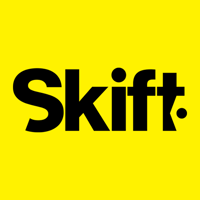data-animation-override> As hotel chains have shifted their business models over the last decade,...
In the News
Hotels Strive to Get Savvier About Forecasting Total Revenue
Falling hotel occupancy in the first half of 2020 may prompt property managers and owners to adopt new digital tools that extract more value from the guests they have. New tools from vendors IDeaS and Kalibri Labs represent a broader trend.
IDeaS, a SAS-owned company that makes revenue management software, announced this week a new budgeting and planning tool, RevPlan. The tool enables a manager to create a budget that includes precise information about a property’s food and beverage outlets, not just guest rooms.
IDeaS is testing RevPlan in three hotel groups. About 120 properties are live. Another 275 properties in the U.S., Canada, Europe, and the Middle East will go live shortly.
The new software pushes the boundaries of what has long been called “hotel revenue management.” It’s no longer all about pricing rooms and setting rates.
What problem is IDeaS’s new software solving? Today hoteliers tend to use spreadsheets to predict how much revenue their food-and-beverage offerings will earn. These ballpark estimates can be rough and off by double-digit percentage points, said James Echert, IDeaS product marketing manager.
Vague forecasts are a problem because food-and-beverage is often the number-two grossing item on their profit-and-loss sheets. Being able to more accurately gauge how much labor a hotel should hire to serve food-and-beverage needs can help flow to the bottom line, as workers are a top variable cost for hotels.
FRICTION IN ADOPTING DATA-CENTRIC APPROACHES
For years, hoteliers have talked about moving towards data-driven analysis, but their progress has been uneven.
Consider why IDeaS feels the need to roll out its new tool slowly. Its software pulls together data that has been floating around in miscellaneous parts of a property management system, the central database for any hotel. But the data has to be cleaned up, or properly coded, to become useable.
Part of IDeaS’ service is to help hoteliers do that clean-up work. While all of IDeaS’ 13,000 clients can sign up, none can’t expect to flip a switch and see insights overnight.
The non-instant process highlights how the typical hotel technology stack remains immature. The slow pace of industry change is due to technical and organizational hurdles.
One problem: Hotels use hundreds of different property management systems, and integrating with these systems can be cumbersome for vendors like IDeaS. (For context, subscribers can read Skift Research’s Hotel Property Management report for 2020.)
At the start, IDeaS RevPlan works only in an integration with Oracle Hospitality’s Opera property management system and Amadeus’s sales and catering tools for hospitality.
Yet an asset manager may own properties that use different property management systems. So asset managers have to wait until software makers have plugged into all the relevant ones to see a full picture of their portfolio.
Organizational change is also needed. For example, hotels typically assign operational forecasting to a financial controller, rather than a revenue manager. IDeaS’ new software lets hotels hand the task to a food-and-beverage director or a revenue manager instead. But that handoff requires a change to how people work.
Hotels typically spread price-setting and forecasting duties across ownership and management structures. This spread can hinder innovation.
IDeaS isn’t the first company to try to crunch numbers about food-and-beverage.
Other tech vendors, such as ProfitSword and Duetto’s Scoreboard, have attempted similar tricks. But IDeaS said it stands out for the granularity of its reports. It will give hotels, and eventually asset managers, a granular look at what’s working and what’s not with specific on-property restaurants, cafes, room service, and minibars.
Hotels have also done work on their own. A few years ago, Kimpton, a brand with a significant food-and-beverage offering, began work with a metric it called RevPASH (revenue per available seat hour), said Heather Richer, chief marketing officer at alternative accommodation brand RedAwning and formerly vice president of revenue management and distribution at Kimpton.
OPTIMIZING REVENUE MIX
While the engines running rate-setting systems are becoming more sophisticated, newer tools are helping hotels become better at predicting property performance and marketing to the most potentially profitable guests.
In May 2019, the hotel analytics startup Kalibri Labs debuted an “optimal business mix” algorithm.
“It does the hard work of statistically testing all the tradeoffs in a market to establish the top opportunities so hotel operators can limit the use of their sales and marketing resources to the best opportunities,” said co-founder and CEO Cindy Estis Green.
Green gave the example of an unnamed U.S. hotel that used the new solution to discover that they had been missing out on $1.6 million in bookings with hotels they hadn’t considered competitors.
The hotel then used software from events intelligence company Knowland to pinpoint which accounts were booking the travel. Salespeople then won over that group business. Green said the hotel added $400,000 in incremental year-over-year revenue net of commission costs.
“They wouldn’t have even have known the business was there if it wasn’t for the software,” Green said.
The software accounts for the cost of acquisition to help a hotel figure out what balance of its bookings should be corporate, government, leisure travelers booking through online travel agencies, and other segments. Operators can then plan their marketing efforts to choose which channels (such as travel agencies) to target, how much to marketing money to spend, and which rate ranges are best.
“We have to be smarter and work more efficiently, and rate optimization alone will not be enough,” said Green. “Looking at your data to set goals for what’s the best performance you can do, given your unique room count, meeting space, and other advantages is very different than worrying about what’s the average performance of the half-dozen hotels in your neighborhood.”
A WAVE OF NEW TOOLS
The new offerings from IDeaS, Kalibri Labs, and others may boost the way companies run their operations.
Echert of IDeaS expects that many hotel leaders will skip the phased approach and jump to so-called “total profit optimization.” He called this a move from looking at RevPAR (revenue per available room) to looking at RevPAG (revenue per available guest), a figure that includes ancillary spending and a customer’s overall spending at a property.
Still, the hotel industry is far from software crunching numbers round the clock to dynamically change estimates of how likely each individual customer is to buy an upsell, such as a late check-out, or take advantage of a discount at a hotel cafe.
The rise of apartment lodgings rented with hotel-style amenities, which is becoming a part of the portfolio mix for hospitality asset managers, complicates things further.
“When you have a large, mixed portfolio with individual homes and regular hotel room inventory, finding the right tech stack is tricky,” Richer of RedAwning said. “For example, in the alternative accommodations world of single units, the concept of an overbooking strategy doesn’t apply.”
RedAwning this week is introducing a “smart pricing” solution. The tool combines revenue management expertise with a data-driven pricing algorithm and automation rules for the short-term rental industry.
This year, pressure on booking volumes may lead hospitality leaders to tap technologies and new practices to become more effective at extracting value from the guests who do arrive. Hotel groups and short-term property owners have warned that severe market conditions related to coronavirus may lead led to declining revenue.




